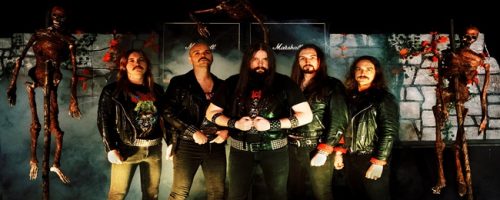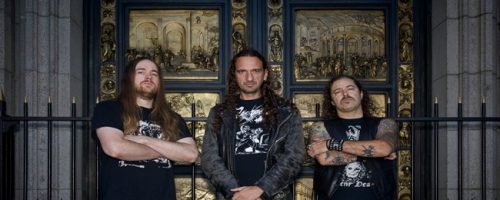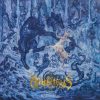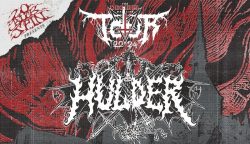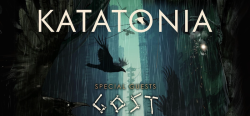Isenmor – Raise Your Shield!
Wednesday, 28th October 2020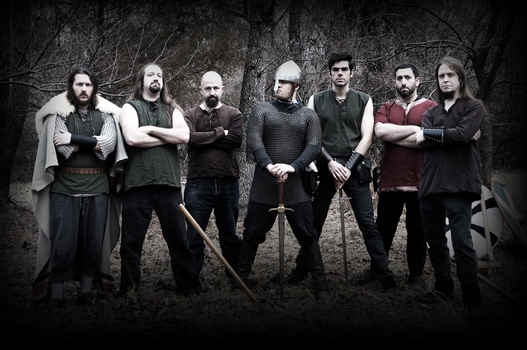
It’s not every day that a metal band has not just one violin, but two in the act. But Baltimore-based folk squad Isenmor has exactly that. Having multiple vocalists doesn’t hurt the band either – instead offering them plenty of variety to please the listener. While folk has certainly been on the rise, Isenmor successfully gives it a nice fresh taste for people to get into. We spoke with violinist/vocalist Nick Schneider to get some info on the new album, it’s Kickstarter campaign, and some thoughts on folk metal in general.
Dead Rhetoric: It’s taken four years to get to Shieldbrother, what are you most happy with about the album?
Nick Schneider: We are just happy to finally have it finished. What we are most happy about? Having people be able to listen to it and hopefully like it.
Dead Rhetoric: How do you feel that Shieldbrother represents Isenmor’s sound in 2020?
Schneider: We have two violins, which makes the sound pretty unique, as well as multiple vocalists. We all have our different influences, and with Shieldbrother we have definitely done more with bringing all of that together. I think the sound really works for us as writers and musicians. Some of the tracks might be heavier on one particular influence in the band, but songs like “Battle Scarred” and the title track lean into more of the core of our sound.
Dead Rhetoric: “Sigurd’s Song” is a massive track. Did it come together differently than the other songs on the album?
Schneider: That one is mostly written by Mike [Wilson], our bassist. He had the idea of a big massive song and he kept going with it. It’s a product of one songwriter getting to make something really massive on his own.
Dead Rhetoric: Could you touch upon the historical themes in the album?
Schneider: The overall lyrical theme is based on the early middle ages, the Dark Ages, in northern Europe. Some Viking stuff too, but for the most part it’s focused on the mythology and history from the Anglo-Saxon perspective. Some of the lyrics are in Old English. When I write lyrics, I’m usually referencing source materials – written works that have survived from the 9th or the 10th century. Stories like Beowulf.
Dead Rhetoric: You reached two stretch goals on your Kickstarter campaign for the album. Were you surprised at the response, given the climate of the world currently?
Schneider: Yeah, we were definitely taken aback by how well the Kickstarter did. The initial goal was fairly modest, because we thought about the state of things and how people might not want to spend a lot of money right now. While we did expect to meet our goal, we did not expect to meet it in like 24 hours and to get so much more on top of that. It was a pleasant surprise.
Dead Rhetoric: Do you feel that having a wide spread of merch and items helped the campaign to be more successful?
Schneider: I think it may have helped, and that was part of the reason we did the Kickstarter. It’s a good way to give people some limited merch and give them a wide range of options. Things that we wouldn’t be able to bring out to shows…not that we are going to be doing that anytime soon anyways.
Dead Rhetoric: You have acoustic bonus tracks, a 16-bit version of the album, as well as instrumentals. Do you feel you’ve really analyzed these tracks inside and out at this point?
Schneider: Yeah, particularly Tim [Regan] because he also did the mixing for the album. He knows every song way too well.
Dead Rhetoric: I really liked the picture that you had for the 16-bit version. Are you guys big on Super Nintendo or did it just come to you as you thought of Super Shieldbrother?
Schneider: The Super Shieldbrother idea came about even before we had the thought of making it into an album extra. I guess Mark [Williams] was bored one day and he did a 16-bit version of one of the songs for fun. Then he ended up bit-tuning the whole album. We knew a lot of people love the idea of things like that, so we decided to release it – then we needed a cover so we did it as a Super Nintendo artwork.
Dead Rhetoric: What do you feel that having two violins helps you to achieve that you couldn’t do otherwise, from a musical perspective?
Schneider: With two violins, guitar, and keyboard gives us the option to create really complex passages where we can have multiple melodies/harmonies going at the same time. Having two violins playing against each other really opens up the ability to do more folky stuff too. They can be in the background too to add texture instead of being in the forefront the whole time. With the complex options, Mike in particular really loves to do that.
Dead Rhetoric: What do you like about folk metal?
Schneider: I’ve been playing violin since I was a kid, so I definitely took classical lessons. In my own time, I found folk music – celtic, bluegrass, and fiddle. Folk music is something I have always liked. Then as a kid getting into metal, and having a genre that brings the two together really interested me. The really nice thing is that I didn’t have to learn a new instrument. I can still play violin in a band.
Dead Rhetoric: Is there a stronger folk metal community here in the US nowadays, compared to say 5-6 years ago?
Schneider: Definitely. Even in the Baltimore area, there are three bands that have started up and we have played shows together this year. There’s more bands on the east coast that we know that have started more recently. I don’t know too many more American folk bands that have been around if you go back much farther than 5-6 years ago.
Dead Rhetoric: Do you have plans for the rest of 2020 and beyond?
Schneider: The album is out in October and we will be working on fulfilling the Kickstarter rewards – finishing up acoustic tracks and getting the merch out. Once that is done, we have already started some writing for the next album. Since there is no touring, we are going to focus on making sure the next album doesn’t take four years [laughs].














